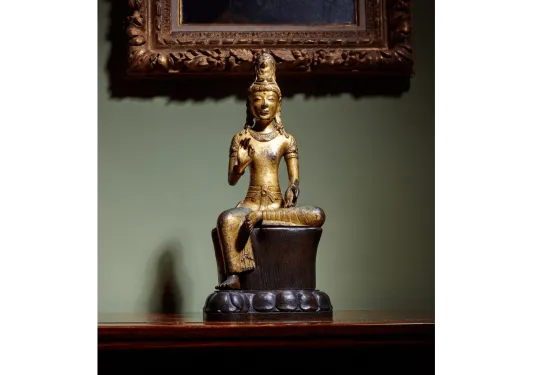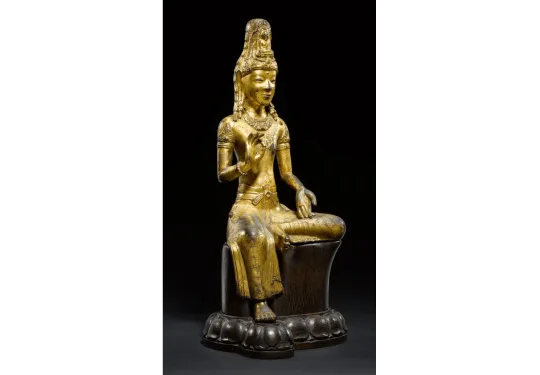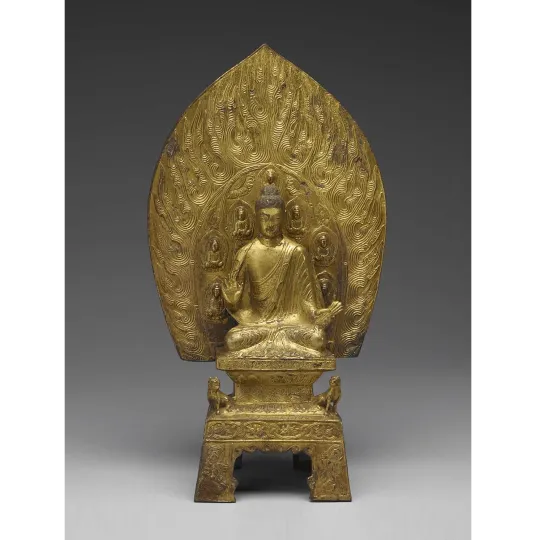Gilt Bronze Seated Figure of Avalokiteshvara, Acuoye Guanyin
By:
Sebastien Raybaud
On
27/09/2022Reading time:
0 min
Summary:
Created during 11th to 12th century
Height: 37.8 cm | Overall: 41.9 cm
Provenance:
Collection of Peng Kai-dong, alias Nitta Muneichi (1912-2006), the Nitta Group Collection
Christie's Hong Kong, 26th April 1998, Lot 606
R.H. Ellsworth Ltd, New York, 30th July 1998
Estimate: HK$15,000,000 – 20,000,000
This present figure comes from the collection of Nitta Muneichi (1912-2006), who was born in Taipei as Peng Kai-dong. He later left for Japan as an adolescent and took on a Japanese name. He became a successful businessman with a company covering a wide range of different industries – such as retailing, jewellery, restaurants, galleries, and property management. After World War Two, he opened an antique shop in Tokyo and he began collecting Buddhist bronzes in 1950, which eventually became his main collecting interest.
A legendary art collector, Nitta donated many Buddhist artworks to prestigious museums – such as the National Palace Museum, Taipei; Tokyo National Museum and the Metropolitan Museum of Art, New York. On top of that, he had even ‘beaten’ The Louvre as well as the British Museum in auctions.


Gilt bronze Buddhist figures such as the present Avalokiteshvara sculpture hold a unique place in the development of Chinese Buddhist sculptures. They are remarkable due to their distinctive style, grace, serenity and their sheer size. Acuoye bodhisattvas – such as this present one – are mostly depicted as standing figures. A seated sculpture, however, is rare and the present Guanyin appeals with its gentle, feminine facial features.
Oeuvres of this type can be attributed to southwestern China, today’s Yunnan province – a region that was ruled under the Nanzhao (750-902) and later Dali (937-1253) kingdoms. During the 9th century CE, Buddhism was established as state religion and the religion was facing multiple challenges to flourish in China’s heartland in the next few centuries.
As found in this sculpture, Yunnanese gilt-bronze bodhisattva figures are distinctive through their physical characteristics of a slender built with prominent shoulders, hands held in gestures of teaching (vitarka mudra) and wish-granting (varada mudra). Alongside these depictions, they are also adorned with bejewelled necklace, armlets and single bracelet, simple dhoti, and high coiffure with an Amitab

